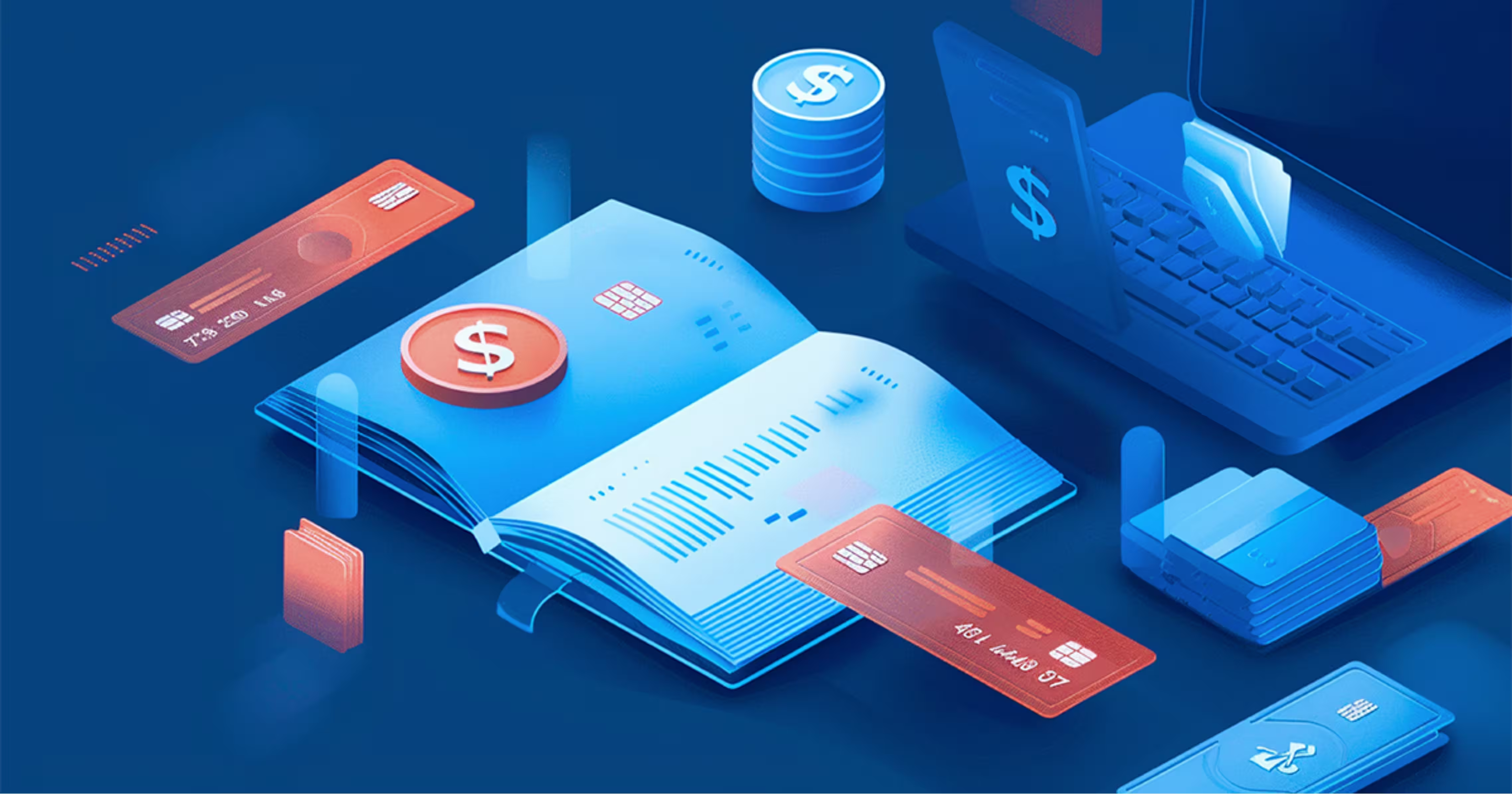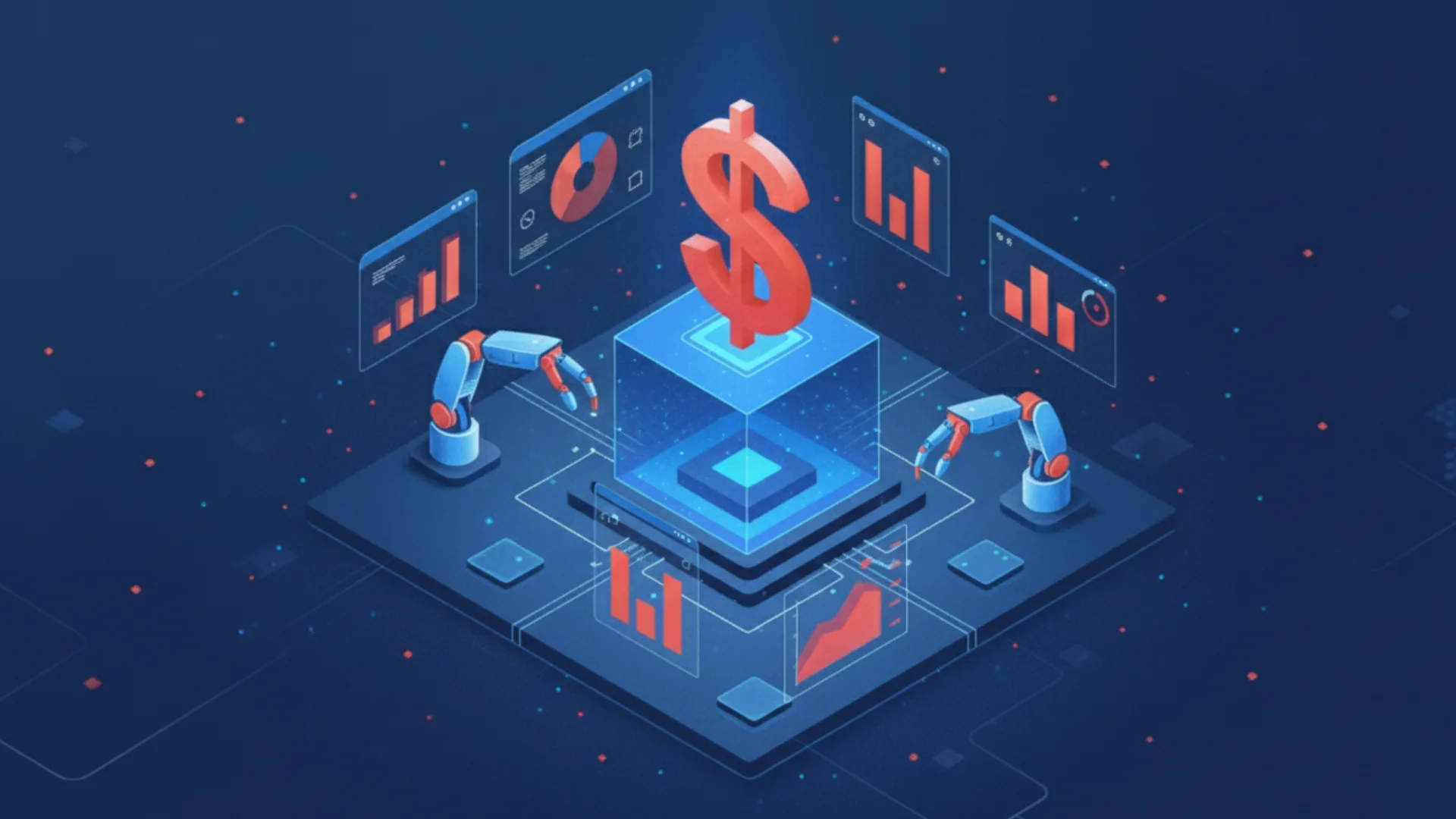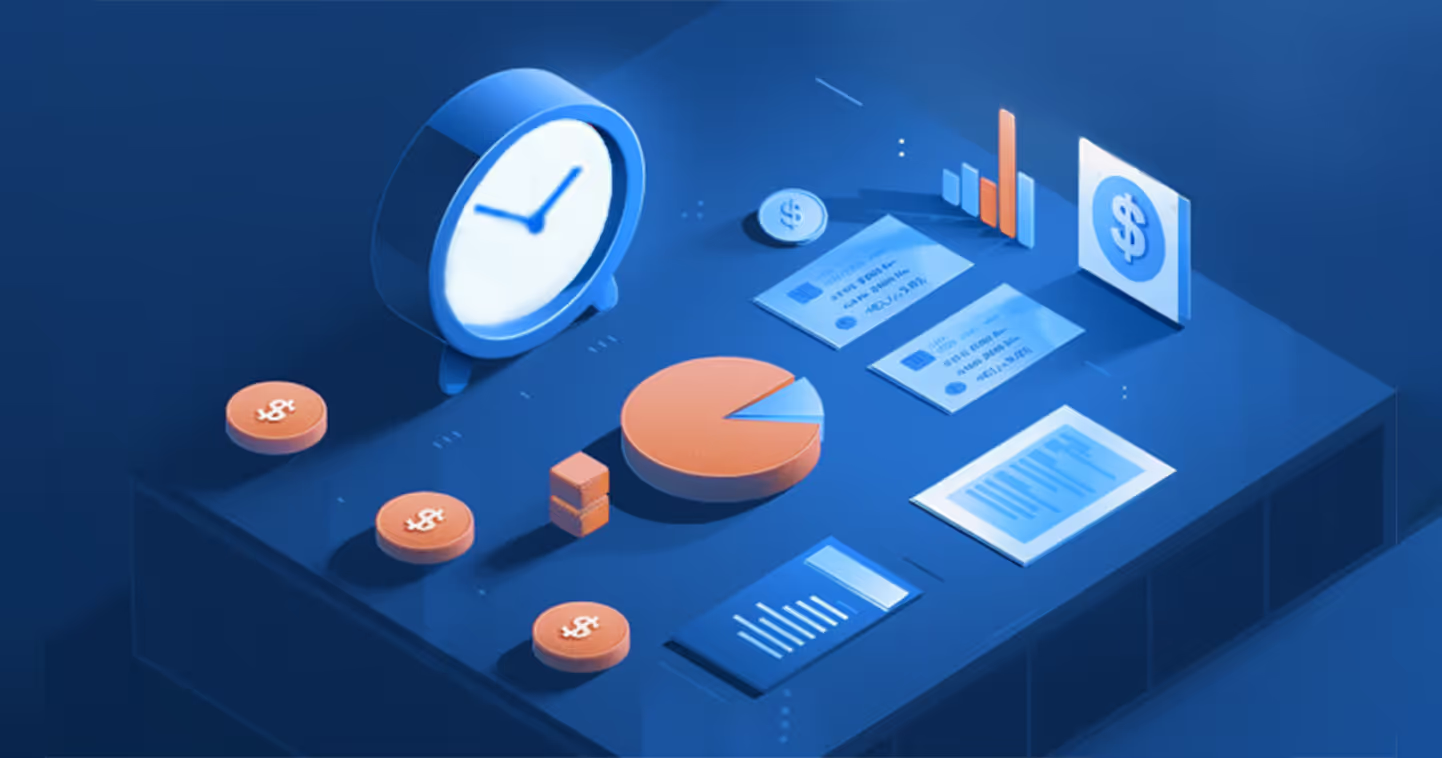How and Why Zenskar is the Most Flexible Finance Platform

Financial operations are still largely manual, leagues behind the general capabilities of the day and age. According to CFO Dive, a 20-person finance team typically loses the equivalent of 1,920 hours annually or an estimated $124,800 in costs to manual accounting tasks.
While efficiency is the need of the hour, the stakes are too high.
Financial operations are closely tied to your business performance and cash flows. Even the slightest error in finance and accounting can have far-reaching implications for the company. So if something goes wrong, it can go very wrong. Implementing any solution is also a vast investment of time and resources - integrating with the rest of the tools, training the team, and migrating from the existing system.
And the main concern for finance leaders still remains, “Is this the right fit for us?”
Unfortunately for them, most available tools are not.
Apurv and Saurabh each discovered this firsthand when they were setting up billing processes at Google and Jukebox respectively. In 2016, Saurabh envisioned a real time accounting solution that could do it all. Read about how his experiences led to building Zenskar.
When their paths crossed years later, they realized it still remained a widespread and unsolved problem.
The finance landscape - available solutions and their challenges
Excited but fairly cautious, they set out to speak with professionals who were facing difficulties with billing and finance functions to validate their hunch.
Before launching, businesses often need to complete essential setup steps such as registering as a private limited company to establish their legal and financial foundation.
“We can’t make changes to subscriptions.”
“Usage data management is impossible without engineers.”
“Our pricing structure is customized for every customer.”
“Our invoices need to be generated before the contract start date.”
“We need tailored revenue recognition rules.”
A few conversations turned into hundreds of interviews when 200+ conversations later, they realized the veritable gold mine of an opportunity.
The myriad of issues, limitations, and pain points our prospects share with us point to one glaring problem: The existing tools are not designed to handle complexity or customizations.
This leaves finance teams to pick between three bad choices:
- Force fit into existing solutions: Lacking end-to-end solutions, teams work with several ready-made or customized solutions that each solve one piece of the puzzle. But the tools are incompatible and disjoint, which when connected, can lead to inconsistencies and disparities, complicating the overall process.
- Build a custom-made solution: it is a cost and resource-intensive affair that takes months of time and a ton of finance expertise to see through. It still isn’t scalable and future-proof and has to be rebuilt when requirements change. Read more about the problems in-house billing systems face.
- Customized an enterprise/open-source solution: Enterprise solutions like Salesforce, SAP, and open source solutions like Lago, KillBill, etc., while clunky to use, can be customized and scaled. These take months to implement with inflated developer costs.
All of the above solutions rely heavily on developmental support to implement and execute. However, engineering talent is costly and hard to hire and retain. Companies are better off using their bandwidth to keep up with the market demands and innovate their offerings.
How we built Zenskar to be synonymous with flexibility
Claiming a platform is flexible is a standard practice, and the said platform can be flexible in a lot of ways too. But if it doesn't align with your specific needs, it falls short.
That's why we've prioritized building our platform to be flexible in every conceivable way. And as we discover new ways to enhance flexibility, we'll incorporate those too. Here are some of our innovations and how they benefit you:
Graphical data model to store pricing and contracts
Pricing and contracts are the foundation of billing and subsequent financial operations. Getting this right makes it easier to manage the downstream functions - invoicing, payments, revenue recognition, reconciliation, and accounting.
Let’s look at a real-world contract and its lifecycle from inception to invoicing. Your sales team negotiated a contract that bundles 3 products:
- Product A has flat prepaid pricing with postpaid overages
- Product B has usage-based pricing based on consumption metric X
- Product C has a usage-based pricing whose rate depends on the usage of product B
The salesperson also committed to a discount of d% on product A if the overall invoice amount exceeds a minimum guarantee of $T. The customer also gets n free credits of product A every month with r% carrying forward every month.
A contract like this is impossible to configure without a developer
The reason why most tools fail here
Most platforms store contracts and pricing information in a linear data model. Meaning, data is stored sequentially, with each element connected to the next and previous elements through simple operators.
Imagine using a simple invoice generator online which allows a handful of input fields to calculate the invoice amount and generate the invoice. This is a defined process, the input fields that can support data within the framework with little to no customization possible.
For instance, adding a percentage discount, a field it does not provide, is not possible. It would be an attempt to fit squares into circles. If your use case fits the template, using the tool is a breeze. If not, you cannot make do.
The benefit of this approach is that the graphical data model allows for dependencies, hierarchies and customization within the data and the computation logic.
This is an intuitive way of configuration and is capable of capturing real-world complexity. Furthermore, Zenskar’s backend pricing model builder can do so through a simple drag-and-drop editor without any code.
Let’s go back to our contract.
The graphical data model easily allows the usage of product B to be an input parameter for the pricing of product C through a dependent relationship. It is possible to add product-level discounts and adjustments within the contract.
Note This is just to show how we operate under the hood, you don’t have to work with the graphical data model.
This is how any pricing structure or contract terms that you put in words, can be configured with ease on Zenskar.
Tdlr; Linear data model = rigidity; Graphical data model = unlimited flexibility
How this benefits you: Enjoy a no/low-code billing experience
Dev support for pricing configuration can help with the customization. But not every business can afford to engage developers for this - it is an additional cost, and financial operations vs. innovation is not an acceptable trade-off.
Decoupling usage from pricing
Metering is the process of tracking usage to be able to bill your customers.
Usage data * Contract terms = Invoice output
Billing is as accurate as the usage and pricing information fed into it.
So metering requires robust architecture, the ability to handle high throughput, reliable storage, retrieval, and processing of this data to use it as an input to billing.
The limitations of metering setup
The main culprit behind the limited capabilities of legacy platforms to handle usage or hybrid pricing models is the approach to usage data itself.
Most billing tools approach usage data as a second-class citizen that is utilitarian, with limitations such as:
- Usage data is firmly tied to the pricing or contract and does not exist outside of it.
- You cannot send usage data frequently or in large volumes.
- Billable metrics/aggregation cannot always be handled within the system.
- You cannot iterate on your pricing models, or modify your plans.
Usage metering and monitoring are central to our platform.
The benefits of the decoupled approach
Decoupling means billing and metering modules are independent systems that data can flow between. This has several advantages:
- Developers can own metering without being involved in billing/having to understand the billing system
- Iterate on pricing without changing your metering setup
- Iterate on your metering setup without worrying about your existing contracts
- Vast flexibility in configuring your metering
- Get more from usage data than just invoices
Developer free billing experience
If metering is tightly integrated with billing, developers need to be actively involved in billing to make simple pricing changes. This often leads to developers becoming gatekeepers of the platform, creating bottlenecks in the process.
The decoupled approach makes it easy to separate ownership. Engineering can own metering and finance can own billing.
Future-proof metering and billing
Decoupled nature of billing and metering allows you to modify one without affecting the other.
In regards to our example contract, this means consumption metric X can be easily replaced with another metric Y without affecting pricing. Or you could change the pricing model of product A from prepaid to postpaid, or subscriptions to usage without changing your metering setup.
Tailor your metering setup to your needs
Given the technicality involved in metering overall - from setup to maintenance to occasional iterations and tweaks, a lot of these eat into engineering’s bandwidth.
API-only access forces developers to get involved in any usage-related tasks. For instance, if a finance operator wanted to check the usage against the invoice generated, a developer needs to pull this report, or set up access for the finance operator to access this themselves.
With a decoupled architecture, the choice of metering setup does not affect the flow of data or the billing process downstream. So we designed our metering to be accessible and intuitive to any user segment - developer or otherwise.
Metering configuration choices and available methods:

You can own your metering and send only relevant billing inputs to Zenskar or make Zenskar the source of truth for everything usage. This choice can be based on the current setup or the preferences and capabilities of the teams involved.

Empower teams to make the most of your usage data
First, we broaden the scope of usage data from the events generated or data ingested to everything useful beyond it.
Imagine tracking alternate billable metrics. Creating alternate billable metrics or aggregates not tied to billing is possible on Zenskar because of decoupling.
The decision to switch from consumption metric X to Y in our pricing experiment could be a hypothesis you want to test. Instead of implementing the switch and affecting your invoices and revenue, you could get some preliminary data to begin it.
You can create billable metrics or aggregates for both the consumption metrics X and Y and see the historical trends to see what is beneficial for you even before you experiment.
You can similarly track entitlements and invoice line items too. Zenskar allows you to configure custom usage metrics. You can also set up alerts - real-time, scheduled, or triggered, so you can take action if and when needed but be vastly unbothered/hands-off otherwise.
While usage data setup is closely linked to engineering, usage reports, and insights benefit several stakeholders.
- C-suite: Get a bird’s eye view of the demand, perceived value, and revenue contribution from every feature and product line.
- Product: Measure and improve product adoption and explore new product opportunities based on usage trends.
- Engineering: Stay ahead of the demand curve and seasonalities to offer an uninterrupted experience and avoid downtime.
- Revenue: Tap into new monetization and revenue opportunities based on usage trends.
Customer success: Keep customers informed and satisfied with transparent usage reports.
Reliable revenue insights through accounting and revenue recognition
The rise of cloud-based accounting and ERP software in the late 2000s offered secure, accurate, flexible and automated accounting. So what’s the problem?
Nuanced billing and downstream functions
The cascading effect of custom pricing or billing needs is the difficulty it creates in recognizing revenue. For example, in cases like tiered and volume pricing, upfront commitments, etc, revenue recognition becomes tricky.
Revenue recognition is the accounting principle that governs when and how revenue should be recognized in a company's financial statements. Meaning, it sits smack in the middle of the overall accounting process.
Pricing and billing complexity in conjunction with accounting is still vastly unsolved.
- Billing tools are not built with accounting capabilities
- ERPs cannot handle revenue recognition due to missing contract information and invoice splits
So we built an accounting system ground up to give you a reliable source of truth for revenue metrics and more.
Double entry accounting as the foundation
While invoicing focuses on the present, the accounting process gives you both retrospective analysis and forward-looking projections that are critical to making informed decisions. It serves as the backbone of financial management, offering insights into profitability, liquidity, and solvency.
The basis for the modern accounting system is the double entry principle that states for every financial transaction, there are at least two accounts involved: one account is debited, and another account is credited. It maintains the accuracy and integrity of financial records.
While the double entry principle is the foundation of accounting and ERP software, most billing tools aren’t built this way.
Automatic creation of journal entries
Zenskar has an event based architecture that records every transaction, invoice, payment status etc as an event which can then be modified based on accounting rules. The event based approach also helps with audit trails.
Integrations consolidate data from across multiple systems - contracts, invoices, payments are usually scattered across their respective tools. This requires integrating the tools and manual work where there are misalignments
For the events Zenskar has access to, it can automatically create journal entries. These are linked to their source objects: contracts, payment status, invoices etc to give the use maximum context.
Just as everything else on the platform, you can create custom accounting rules on how to create or publish journal entries to relevant ledgers and accounts.
The journal accounts include: Revenue, Contract Assets (or Unbilled Revenue), Contract Liabilities (or Deferred Revenue), Receivables from Customers, Receivables from Payment Gateways, Payment Gateway Expenses, Payment Gateway Cash Payouts, Sales Tax Payables, etc.
This approach also simplifies bookkeeping and reconciliation.
Decoupling invoices and revenue for accurate revenue recognition
While the ability to handle intricate billing terms is one of the limitations of existing systems, the other major one is that invoices and revenue schedules are tied together.
That is far from how revenue recognition works in action.
How every line item has - contract information from Zenskar/CRM, invoice related information, revenue schedule.
Stay on top of your growth
- Standard revenue and financial reporting
- Growth and SaaS metrics: Revenue, ARR, Churn
- Custom metrics
How Zenskar’s vision powers limitless flexibility
Right off the bat, Zenskar was conceived to bridge the gap between the needs of modern finance teams and the options available to them. The current challenges form the base of our product vision. Let us demonstrate how our vision empowers you with flexibility.
Ability to handle complexity and support customization
The way we approached this complexity and customization reflects our dedication to this problem. Every feature and functionality in our platform has been designed with a specific objective, aimed at being flexible and modular.
Let’s look at Zenskar’s collections module designed to handle customization.
Our collections module aims to improve the cash flows of a business while reducing the effort involved. Usually, this process involves manually editing and sending customized emails for every client, either with invoices attached or sharing the payment details directly in the email. With hundreds of clients and thousands of emails to send, errors, delays, and missed follow-ups are a common occurrence.
Zenskar has an in-built communication module that gives you everything you need for collections without having to integrate with an email tool or do it manually.
Let’s talk about the email follow-ups specifically. Email templates can be configured on Zenskar with:
- Custom branding elements such as brand logo and colors
- Addition of HTML email upload to retain the look and feel of the rest of your brand communications
- Emails have custom fields that fetch information from the billing system
So in this case, your team can set up dynamic email follow-ups consistent with your brand with invoice amount due, payment method information, due date, etc. added. You can even include IMS meaning text to clarify internal message statuses or updates within these automated emails. A one-time effort that avoids hours of grunt work because current tools miss customizability.
Our architecture also ensures smooth data transition between the modules within the product and in and out of the Zenskar system, so that our platform can cater to any specific use case, fit seamlessly into any tech stack, can and be used for end-to-end financial operations or standalone in silos.
Build reliable financial automation end-to-end
Flexibility and automation don’t usually go hand in hand.
Automation reduces recurring tasks and processes by relying on generic rules and commonalities. Flexibility deviates from this simplified framework as it requires processes to be customizable. These goals can be at odds with one another, if not handled well.
We understand the stakes, so we are dedicated to solving the intricacies at scale automatically. While reducing manual effort is one of the goals, accuracy, adherence to regulations, and transparency are also critical. So we challenge and redefine the scope of what can be automated and how. Our framework:
- End-to-end automation: A job half done is as good as none. Partial or broken automation is worse than manually doing a task because it only adds to the confusion of the team, the output, and the ownership.
- Interconnectable systems: Automation in an isolated environment that cannot sync across other dependent systems is also a job half done. You know where we stand about it. Synchronizing with related systems and the reliable flow of data between them is a part of automation where we are concerned.
- Transparency and control on workflows: Systems are as good as the trust you have in them. Transparency is the way to build that trust. The ability to edit and change workflows empowers your automation further.
Learn more about FinOps automation here.
Going back to the example of our collections module, let’s now learn how you can automate your entire collections process:
- Create customer segments based on different attributes.
- Add a communication schedule for each segment
- Use dynamic email templates in the schedule to automate this process completely

Syncing payment gateways with Zenskar lets our system know when a payment has been made. This ends the payment collection follow-up, triggering a payment confirmation message. This information also reflects in the payments dashboard on Zenskar, and if integrated, on your ERP as well.
As promised, you can change your workflows at any time. You can find the sent emails on our dashboard too.
TL;DR
Zenskar is committed to providing its users with limitless flexibility in every feature - billing, collections, accounting and revenue recognition.
Powered by its graphical data model, Zenskar configures complex pricing plans without any hassle. The decoupled architecture ensures billing and metering work independent of each other, reducing dependencies and giving you the ability to modify one without affecting the process. The real-time accounting framework and powerful integrations unify and automate your processes, making the revenue side of financial operations a breeze.
If you resonate with the pains mentioned in the article or if you think our approach to flexibility can benefit your business, we are happy to chat with you to understand your specific problems and how we can help. Feel free to block a time slot here.
If you are a fellow tech enthusiast or a finance geek, we’d love to hear your thoughts. Always excited to brainstorm ideas and learn how to make our product better. You can write to us here.
Switch to zero-touch FinOps with Zenskar
Vertice closed books 70% faster with Zenskar
We launched our product 4 months faster by switching to Zenskar instead of building an in-house billing and RevRec system.

Frequently asked questions
Zenskar is a fully automated, flexible finance platform that eliminates manual financial operations through:
- Graphical data model for complex pricing/contracts (no-code drag-and-drop)
- Decoupled metering + billing (usage data independent of pricing)
- End-to-end automation: Billing, revenue recognition, accounting, collections
- AI-powered features: Contract ingestion, usage aggregation, analytics
- Double-entry accounting with automatic journal entries
- 200+ integrations for seamless data flow
Replaces rigid ERPs/billing tools with tailor-fit solutions for any pricing model, reducing dev dependency and enabling real-time revenue insights.
























